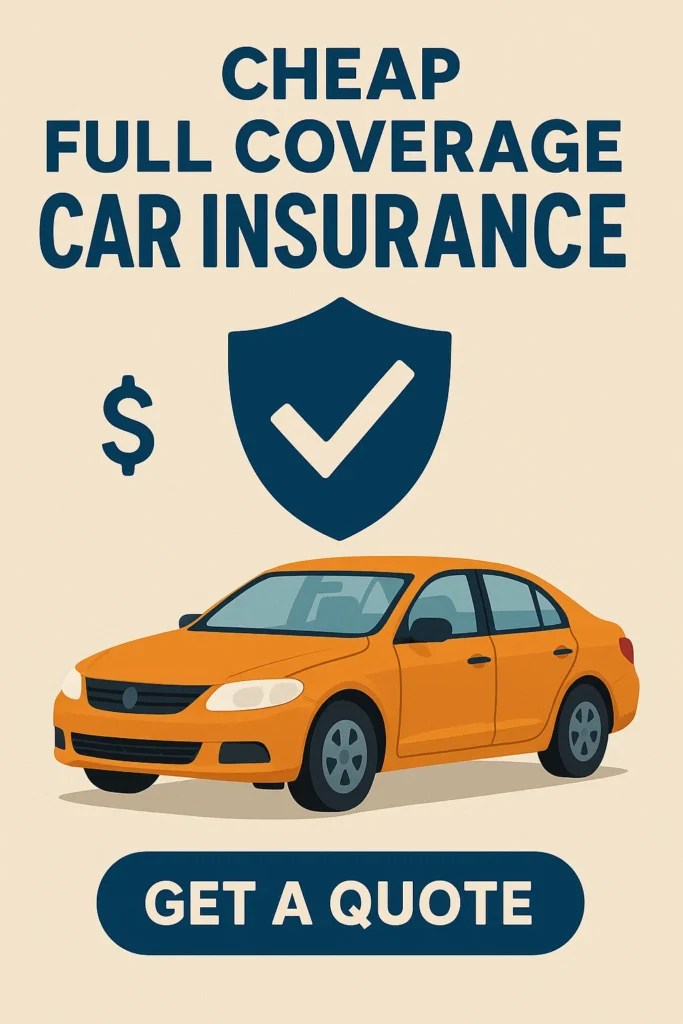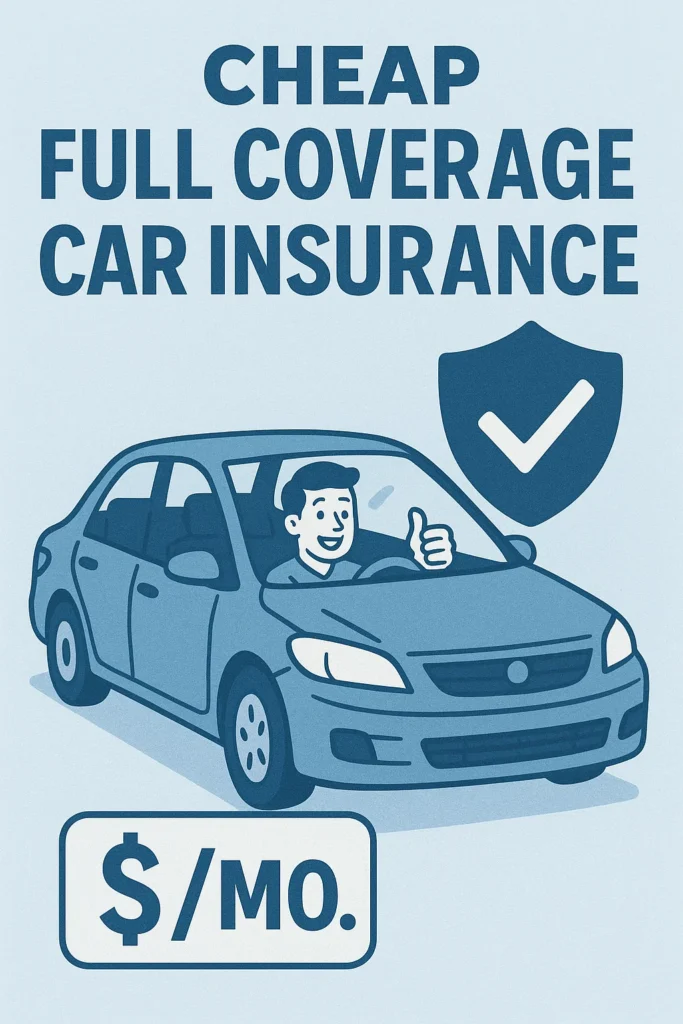Cheap Full Coverage Car Insurance: How to Save Big Without Sacrificing Protection
If you’re on the hunt for cheap full coverage car insurance, you’re not alone. With the rising costs of everything from gas to groceries, saving money on car insurance without giving up valuable protection has become a top priority for many drivers. The good news? You don’t need to settle for bare-bones liability coverage to stay within budget.
Many drivers misunderstand what full coverage really means. It’s not a single insurance product, but rather a combination of protections that together provide peace of mind. According to the Insurance Information Institute, full coverage typically includes liability, collision, and comprehensive insurance—a trio that covers damage you cause to others, damage to your own vehicle in an accident, and non-collision incidents like theft, weather, and vandalism.
What’s more, your credit score plays a bigger role in your premium than you might think. The Consumer Financial Protection Bureau explains that improving your credit can significantly reduce your insurance rates in most states. If you’re looking for long-term savings, building good credit is one of the smartest moves you can make.

What Does Full Coverage Include?
While definitions vary by insurer, a full coverage car insurance policy typically includes:
- Liability coverage – Required by law in most states; pays for injuries and property damage to others.
- Collision coverage – Covers damage to your car from accidents, regardless of who’s at fault.
- Comprehensive coverage – Covers theft, weather damage, vandalism, animal collisions, and more.
- Optional add-ons:
- Uninsured/underinsured motorist coverage
- Medical payments or Personal Injury Protection (PIP)
- Rental reimbursement
- Roadside assistance
These components combine to provide well-rounded protection—and when customized properly, can still be cheap.
Is Full Coverage Always Expensive?
Not at all. The cost of full coverage car insurance depends on multiple factors:
- Your driving record
- Type of vehicle
- Zip code or state
- Credit score
- Coverage limits and deductible amounts
By understanding what affects your premium, you can make smart adjustments—like choosing a higher deductible or driving a safer, lower-cost vehicle—to reduce costs.
How to Get Cheap Full Coverage Car Insurance
To keep premiums low while maintaining strong protection, use these strategies:
- Compare quotes from at least 3–5 insurers
- Bundle policies, like home and auto insurance
- Choose a higher deductible (only if you can afford it)
- Maintain a clean driving record
- Consider telematics or usage-based programs
- Look for discounts:
- Safe driver
- Good student
- Low mileage
- Military or veteran status
- Vehicle safety features
Best Providers for Cheap Full Coverage Car Insurance
These insurers frequently appear in lists of the most affordable providers for full coverage policies:
- GEICO – Great rates and a long list of discounts
- Progressive – Usage-based Snapshot program helps safe drivers save
- State Farm – Competitive rates and strong local agent support
- Nationwide – Offers accident forgiveness and customizable plans
- USAA – Extremely low rates for military members and their families
Each insurer calculates risk differently, so it pays to get multiple quotes—even from regional insurers.
Where Full Coverage Is Cheapest (and Most Expensive)
Location heavily influences insurance rates. Consider the following:
📉 Cheapest States
- Idaho
- Maine
- Ohio
- Vermont
- Wisconsin
📈 Most Expensive States
- Michigan
- Florida
- Louisiana
- California
- New York
If you live in a high-cost area, consider pay-per-mile insurance or increasing your deductible to control premiums.

Cheap Full Coverage for Different Driver Types
Your personal situation greatly affects your premium. Here’s how to find savings by profile:
🧑🎓 Young Drivers / Students
- Stay on a parent’s plan if possible
- Take defensive driving courses
- Maintain good grades for student discounts
👵 Senior Drivers
- Ask about senior driver discounts
- Re-evaluate mileage and remove unneeded coverage
⚠️ Drivers With Accidents or DUIs
- Use accident forgiveness programs if eligible
- Shop around aggressively
- Take state-approved driving courses
🚙 Low-Mileage Drivers
- Explore telematics or pay-per-mile insurance
- Report accurate mileage to your insurer
When to Drop Full Coverage
Full coverage doesn’t always make financial sense, especially for older vehicles.
Consider dropping full coverage if:
- Your vehicle is worth less than $3,000–$4,000
- You can afford to replace it without insurance
- You’ve paid off your car loan
- You’re only concerned about legal requirements
Just keep in mind: liability coverage is mandatory in most states, even if you drop collision and comprehensive.
Frequently Asked Questions (FAQs)
What is the cheapest full coverage car insurance?
This varies by location and profile, but GEICO, Progressive, and USAA often offer the lowest rates.
Is full coverage worth it on an old car?
Only if the car is valuable enough to justify the premium. For older or low-value vehicles, liability-only coverage might suffice.
Can I get full coverage with bad credit?
Yes, but your premium will likely be higher. Improving your credit score can lead to big savings over time.
What’s the difference between liability and full coverage?
Liability coverage protects others if you cause an accident. Full coverage includes liability plus collision and comprehensive, protecting your vehicle too.
How can I lower my full coverage rate?
- Compare quotes annually
- Increase your deductible
- Enroll in safe-driving programs
- Ask for discounts
- Maintain good credit and driving habits
Final Thoughts
Cheap full coverage car insurance isn’t a myth—it’s about being strategic. By understanding what goes into a full coverage policy, shopping smart, and taking advantage of every discount available, you can get the protection you need without blowing your budget.
Don’t settle for less coverage than you need. Instead, customize your plan to fit your life, your car, and your finances—without overpaying.